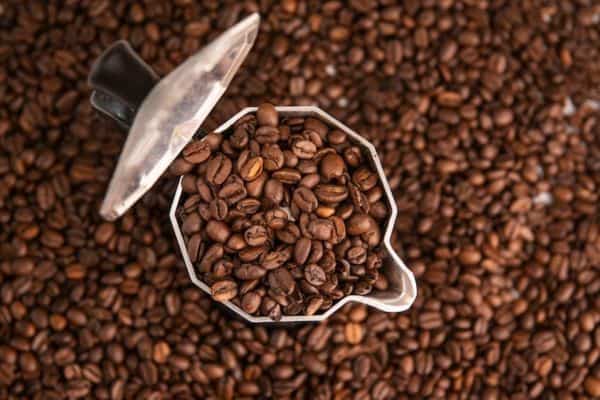
Experimenting with different ways to make coffee is one of my favorite activities on a leisurely morning during the weekend, and that’s how I discovered the joys of Moka pot coffee.
Moka pots use a unique brewing method that leads to an incredibly rich flavor. But you can’t just throw any coffee grounds into a Moka pot and get the best outcome. Instead, you need to choose the right Moka pot grind size.
Luckily, choosing the best grind for Moka pot coffee is ridiculously easy. If you’re wondering about the Moka pot grind size, including why it matters and what to choose, here’s everything you need to know.
What Is a Moka Pot?
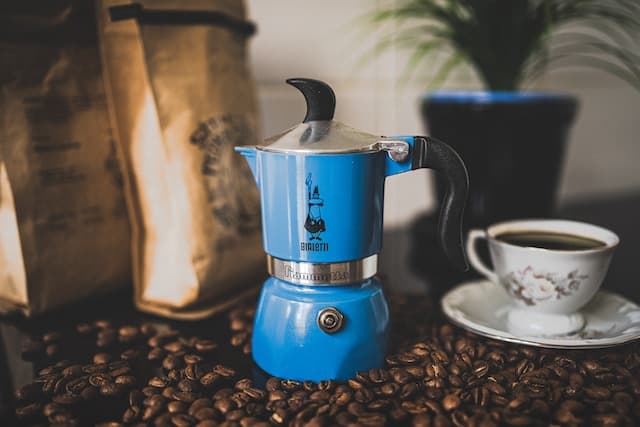
Photo by Rafael Leão
A Moka pot is an Italian coffee brewer that uses steam to extract rich flavors from coffee grounds. The original was invented by Luigi De Ponti and Alfonso Bialetti, and the Bialetti Moka Express was first produced in 1933.
The Moka pot’s design relies on pressure, allowing steam to extract amazing flavor when brewing coffee. It’s a stovetop device that has an upper and lower chamber with a filter for holding coffee grounds.
How a Moka Pot Works
Moka pots work by using heat and steam pressure to produce coffee with a concentrated flavor. Coffee grounds are placed in the filter basket in the center of the device, while filtered water goes into the lower chamber. As it’s heated, steam flows through the grounds, and coffee gets collected in the upper chamber.
Usually, you can brew coffee in a Moka pot in about five to seven minutes, which is reasonably quick. Plus, it’s very low effort. Once you put in the grounds and water and place the Moka pot on a stovetop, the brewer does all of the rest.
Pros and Cons Compared to a Regular Espresso Machine
The main benefit of a Moka pot vs. an espresso machine is that Moka pots aren’t mechanical or electronic devices. That means that a single Moka pot can last a lifetime with proper care, while an at-home espresso maker may only last three to five years with regular use.
Aside from figuring out the right Moka pot grind size (which isn’t difficult), there is essentially no learning curve for brewing with a Moka pot. In comparison, some espresso machines are surprisingly complex.
While Moka pots aren’t the simplest to clean, they’re far easier to deal with than espresso machines. For example, espresso machines need regular descaling, while Moka pots don’t.
When it comes to drawbacks, Moka pot coffee can end up bitter if you aren’t careful. Moka pots are also a bit small, so if you want several coffee drinks in quick succession, it’s slower to use a Moka pot than an espresso machine.
Finally, while people refer to a Moka pot as a stovetop espresso maker, it’s not actually making espresso. Yes, you get a rich, concentrated cup of coffee, but it’s not the same as a shot of espresso. So, if you’re actually hoping for espresso, a Moka pot might disappoint.
Moka Pot Grind Size
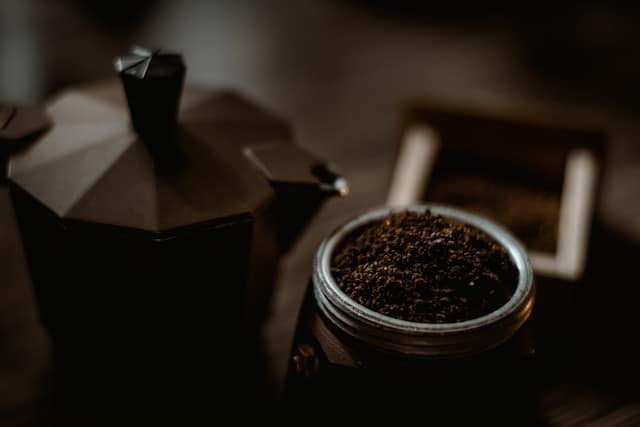
Photo by Ashkan Forouzani
Why Grind Size Is Important
When you’re using a Moka pot, the grind size matters for a few primary reasons. First, grind size has a significant impact on flavor. Too fine, and it may be overwhelming. Too coarse, and it can end up watery or bland.
Second, the grind size impacts the flow of steam through the coffee grounds. That alters how much pressure is created within the Moka pot. Along with changing extraction, the wrong amount of pressure could be dangerous.
Recommendation for Moka Pots and Why
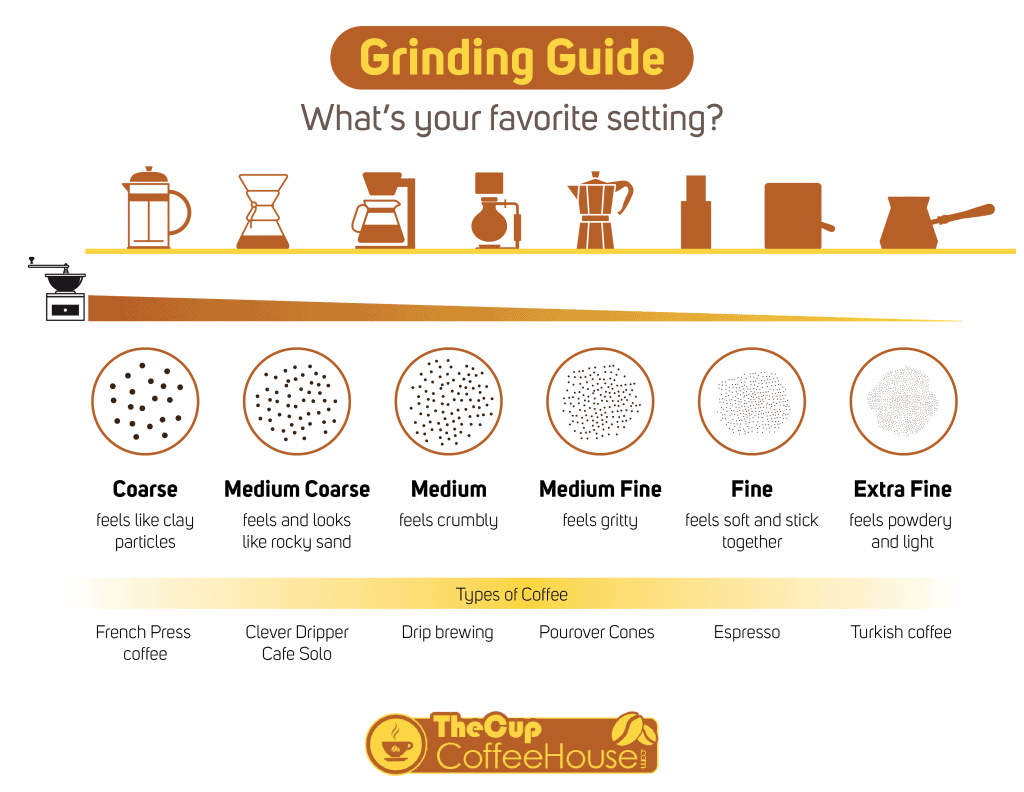
Generally, you want to use a medium-fine grind coffee when you’re brewing using a Moka pot.
Finer grinds lead to slower flow rates and more extraction, which can cause your coffee to taste burnt or bitter. Plus, anything finer can clog up the filter screens. Since Moka pots rely on pressure, clogs could be dangerous if they cause the pressure to build up too much.
But going with a coarser grind could lead to less flavor. With coarser grinds, you get lower extraction rates since there isn’t as much surface area. That means using a coarser grind could cause your coffee to seem watery.
The moka pot grind size number varies depending on your grinder, as each may label their grind sizes in different ways. However, the goal is usually to get the grounds to measure between 500 and 700 microns, which is similar to the size of table salt.
Here are some grind settings for specific brands:
- Moka Pot Grind Size for Baratza Encore: 10-12
- Moka Pot Grind Size for Timemore C2: 11-15
- Moka Pot Grind Size for Breville Smart Grinder Pro: 25-34
- Moka Pot Grind Size for Ek43: 5
- Moka Pot Grind Size for Baratza Virtuoso: 10
- Moka Pot Grind Size for Niche Zero: 21-25
Generally, those grind settings – or medium-fine grounds you get using other grinders – work well for essentially any Moka pot brand. For example, if you’re looking for the Bialetti Moka pot grind size, those will usually work.
Step-by-Step Guide to Brewing with a Moka Pot
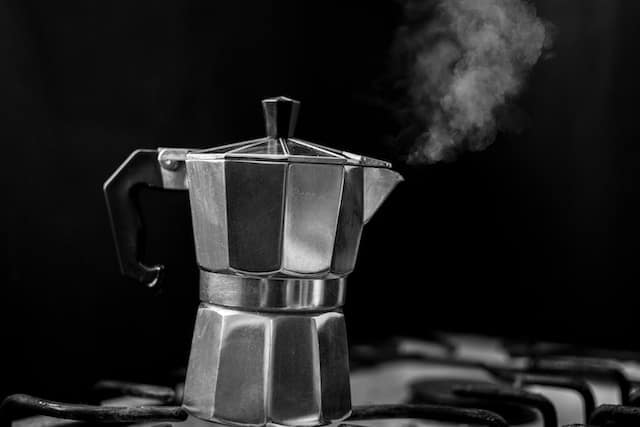
Photo by Elesban Landero Berriozábal
When you’re making Moka pot coffee, you need the right Moka pot coffee ratio to water. Generally, you’ll aim for a ratio of about 1:10, using ten ounces of water per one ounce of coffee grounds.
- Start by going with filtered water, and preheat it to reduce the brewing time.
- Place the medium-fine coffee grounds in the filter, leveling them off without tamping them down.
- Fill the lower water chamber with the heated water, ensuring the valve isn’t covered.
- Then, assemble the Moka pot, ensuring that loose grounds don’t prevent a full seal.
- Once it’s together, put the Moka pot on your stovetop and turn it on. Generally, start around medium heat and listen to make sure it reaches a boil but that you don’t see rapid bubbles or anything spurting out.
- Let the Moka pot heat for about five to seven minutes or when the pot starts to whistle or hiss. Once you hear the sound, it’s done.
Just be careful when opening the spout or dispensing, as the Moka pot can get hot. In some cases, it’s best to let it cool a bit before pouring, just as a precaution.
Troubleshooting Common Issues Related to Grind Size
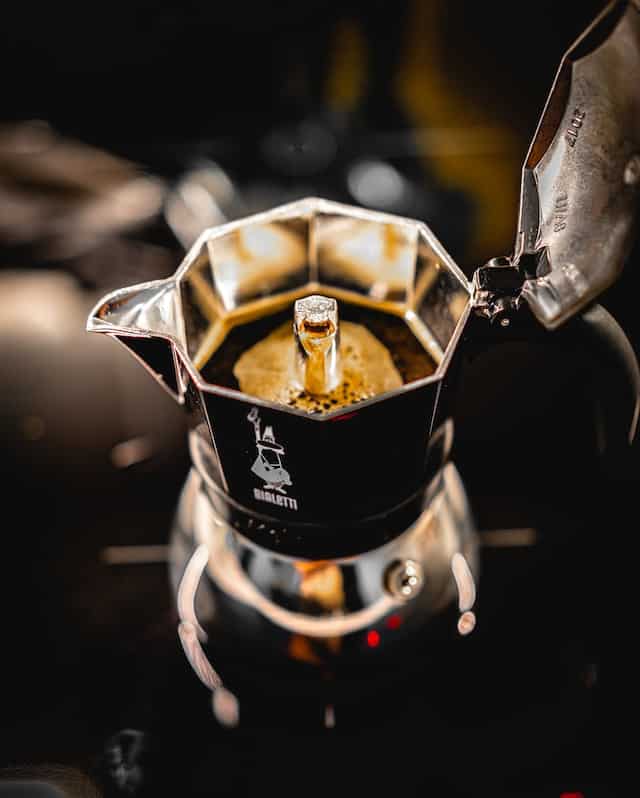
Photo by Martin Tupy
Coffee Is Too Bitter
If you’re Moka pot coffee is coming out bitter, there are a few things to try. First, make your grounds just a bit coarser. Also, try using more heat on the stove or alter the water-to-coffee ratio, going with a 1:7 ratio or something near there.
Personally, I’ve found that going with a lighter roast can also work wonders. In my experience, darker roasts seem to have a higher chance of bitterness, so going with a medium roast may do the trick.
Coffee Is Too Weak
If you’re Moka pot coffee is coming out too weak, try a slightly finer grind. You can also tap the grounds down a bit in the filter (without overly compressing them), as that slows the flow of steam.
Cleaning and Maintenance
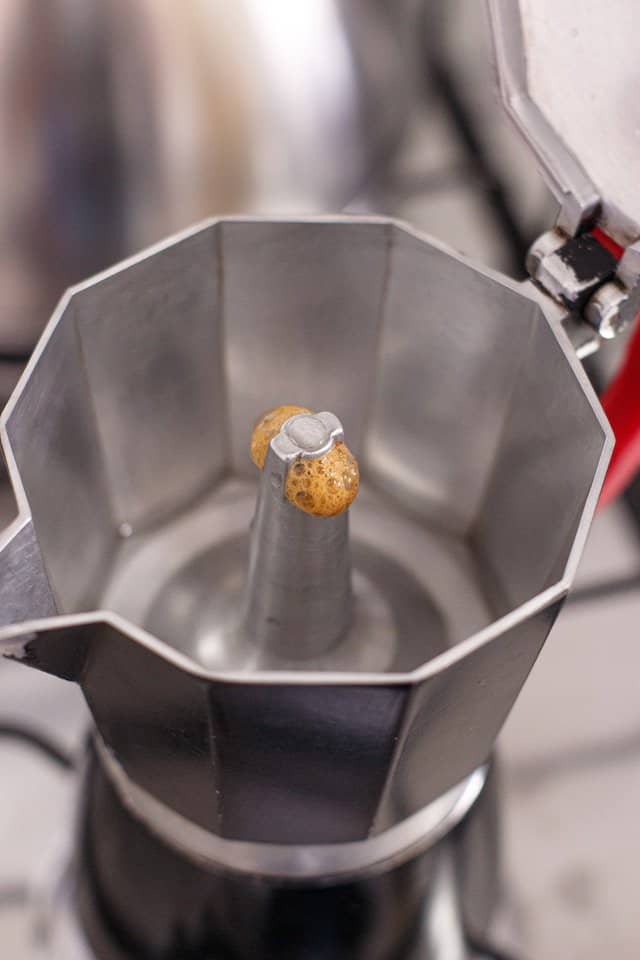
Photo by Vinicius Benedit
Cleaning and maintaining a Moka pot isn’t overly complicated, but it requires some effort. You want to fully disassemble the Moka pot and clean it using hot running water after each use. Make sure no coffee or grounds are left behind, then dry it thoroughly with a soft cloth to avoid oxidation. Every now and then, take a soft toothbrush to clean anything trapped in the filter.
You can also do a thorough cleaning by adding filtered water into the lower reservoir, putting in two teaspoons of distilled white vinegar, assembling the Moka pot, and heating it on the stove.
The process is the same as when you brew, but you don’t have any coffee grounds. After it’s done, let the Moka pot cool, rinse it thoroughly with hot running water, and dry the Moka pot with a soft cloth.
FAQs
Is a Moka Pot Grind Finer Than Espresso?
When it comes to the Moka pot grind size vs. espresso grinds, the espresso grind size is slightly finer than what you want to use for a Moka pot. Generally, Moka pots do best with a medium-fine grind, while espresso uses a fine grind.
Can You Use Regular Ground Coffee in a Moka Pot?
Regular coffee grounds – like the packaged ground coffee you find in stores – are usually a little coarser than what you want to use in a Moka Pot. While it technically can work, grinding your own beans to make sure it’s medium-fine is usually the better option.
Does Coffee Taste Better in a Moka Pot?
Overall, what tastes “better” is subjective. If you enjoy a rich, concentrated cup of coffee, you may like Moka pot coffee more than some alternatives, like a traditional drip. However, if you prefer a lighter, delicate flavor, the Moka pot coffee may be more intense than what you’re after.
Coffee Has Never Read This Good!
Sign up for a FREE newsletter to the best home brewing tips and guides
Thank you for subscribing to The Cup Coffee House Crew! There's a surprise in your Inbox 🙂
Something went wrong.
- About the Author
- Latest Posts

Catherine Reed is a freelance writer and coffee enthusiast. She has been a lover of coffee, espresso, and various café-style concoctions for more than 20 years, and enjoys exploring everything the world of coffee has to offer. Whether it’s trying out new coffee technologies or exploring small-batch creations from independent micro-roasters, Catherine is open to any coffee experience, and aims to share everything she’s learned with discerning readers interested in leveling up their coffee game.

